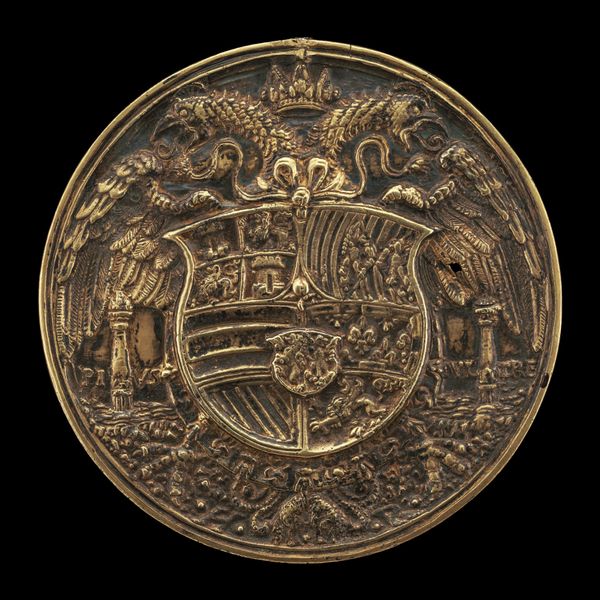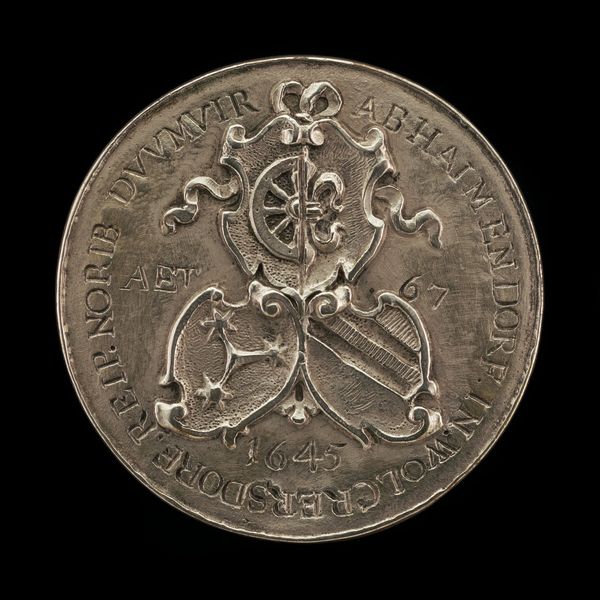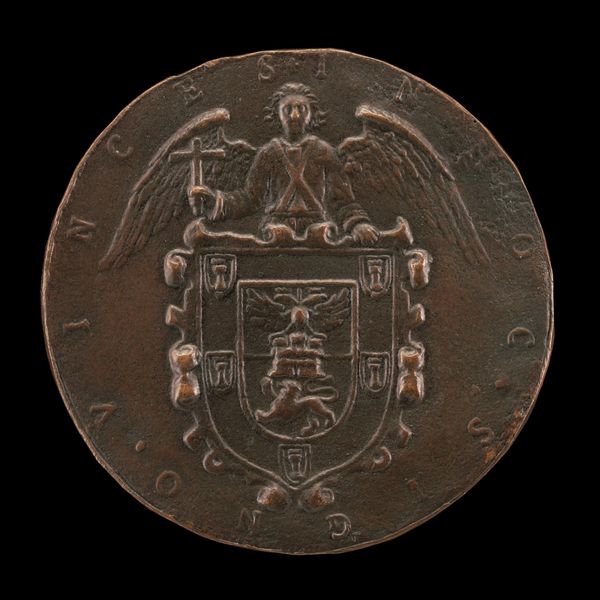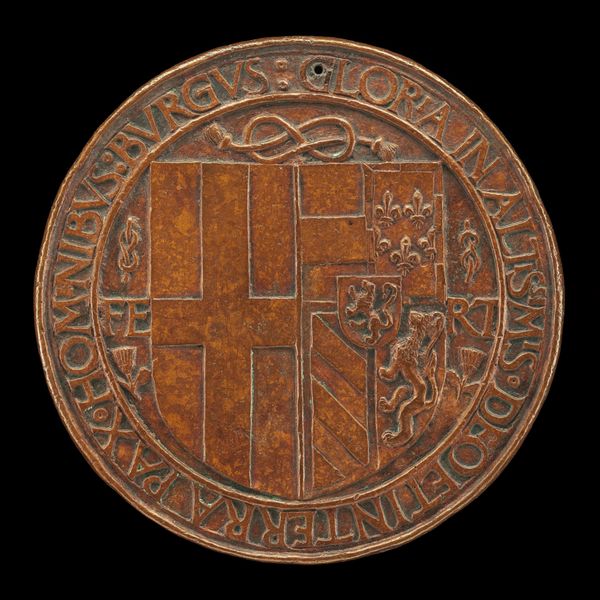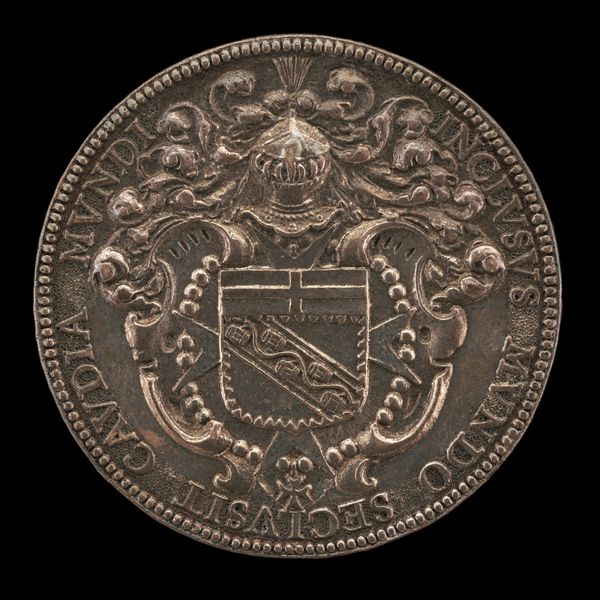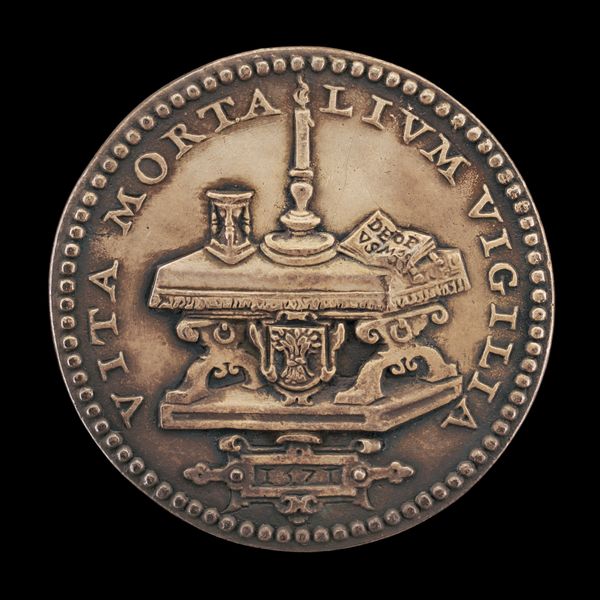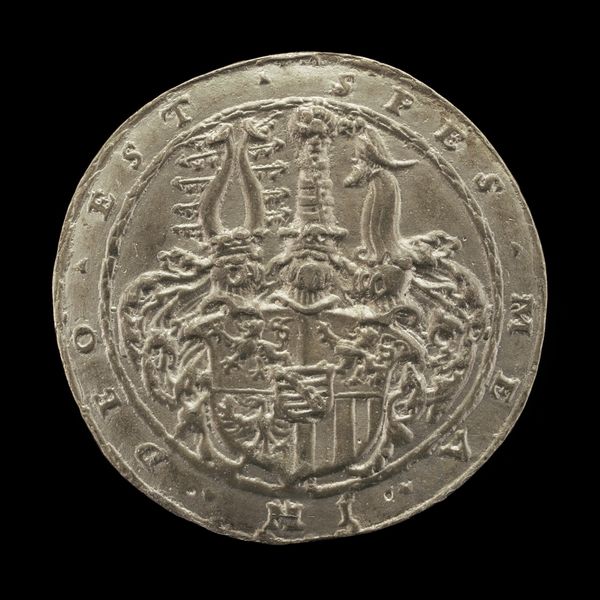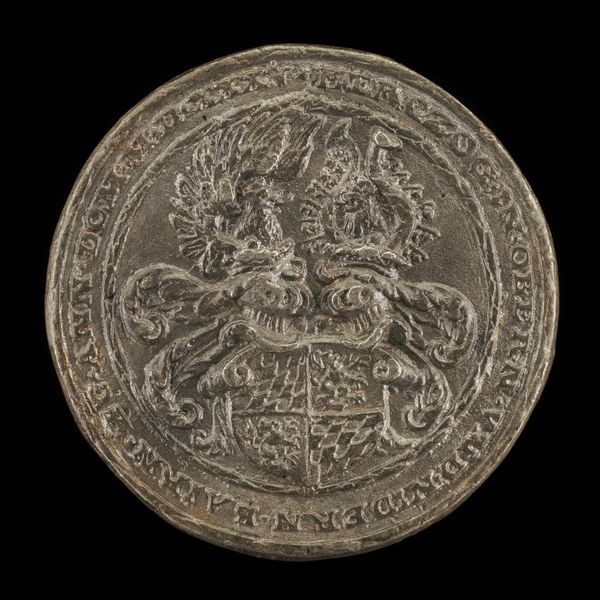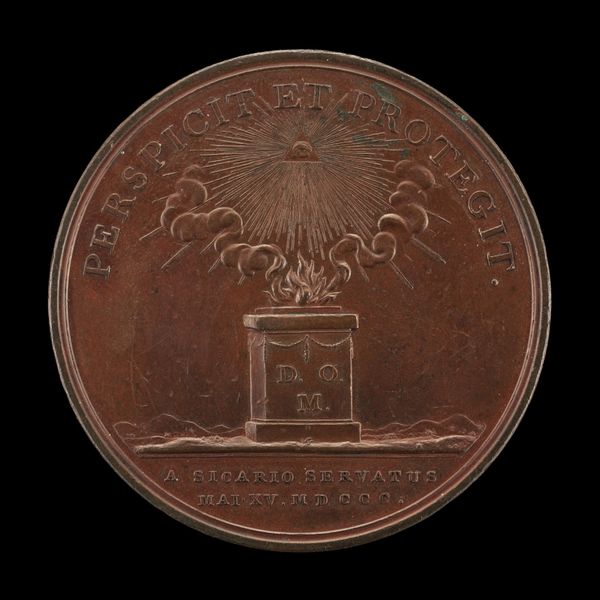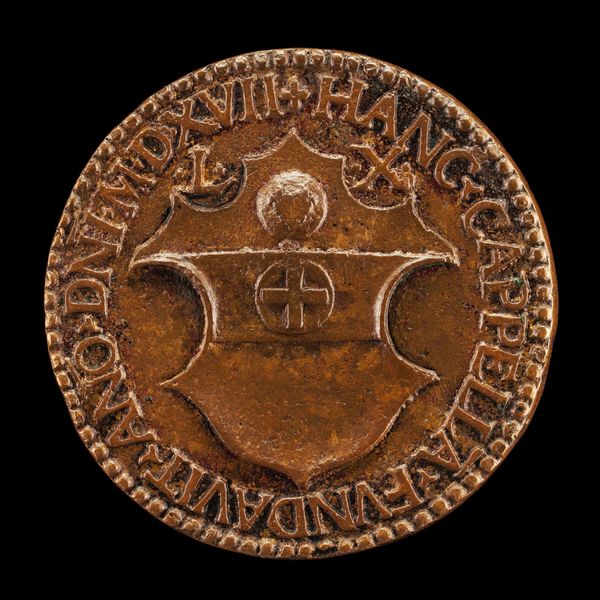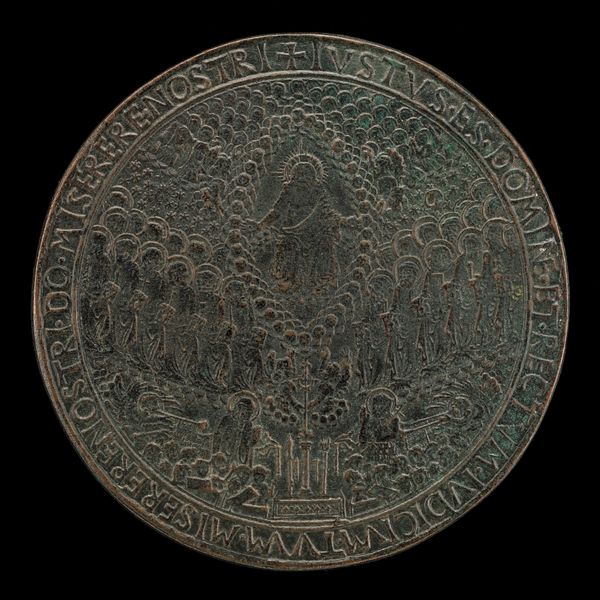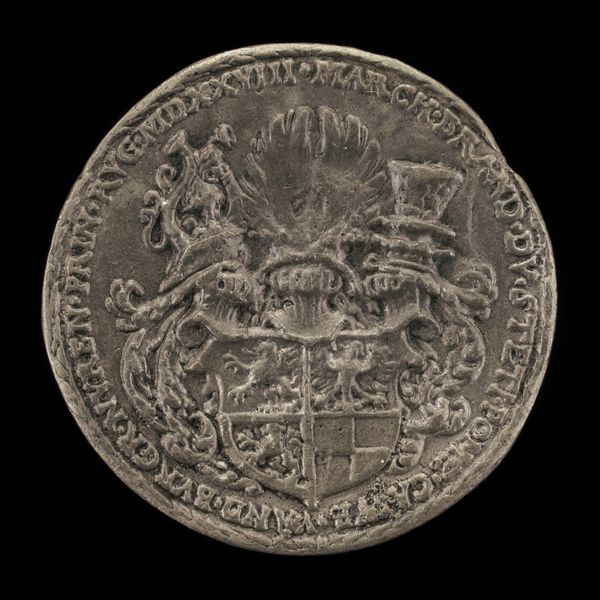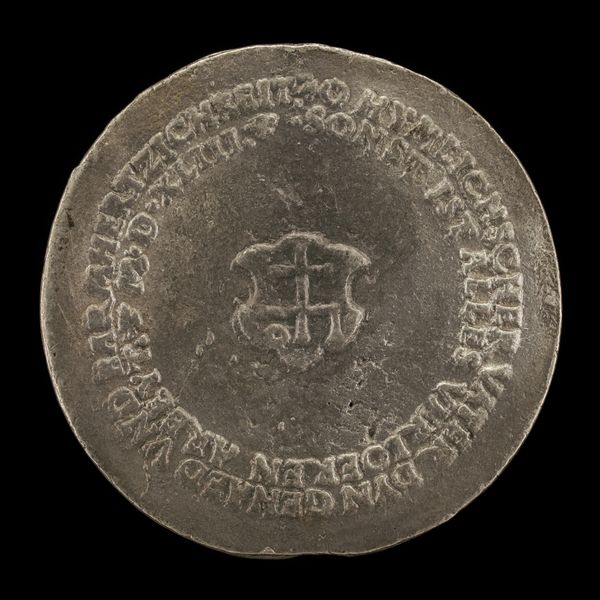![Shield of the Arms of Croy and Arschott [reverse] by Anonymous](/_next/image?url=https%3A%2F%2Fd2w8kbdekdi1gv.cloudfront.net%2FeyJidWNrZXQiOiAiYXJ0ZXJhLWltYWdlcy1idWNrZXQiLCAia2V5IjogImFydHdvcmtzLzY5ZDg5ZjEyLWIzMmQtNDcyMC1hNjBmLWYwNjcxZmE1ZDNkZi82OWQ4OWYxMi1iMzJkLTQ3MjAtYTYwZi1mMDY3MWZhNWQzZGZfZnVsbC5qcGciLCAiZWRpdHMiOiB7InJlc2l6ZSI6IHsid2lkdGgiOiAxOTIwLCAiaGVpZ2h0IjogMTkyMCwgImZpdCI6ICJpbnNpZGUifX19&w=3840&q=75)
Dimensions: overall (diameter): 5.48 cm (2 3/16 in.) gross weight: 64.66 gr (0.143 lb.) axis: 12:00
Copyright: National Gallery of Art: CC0 1.0
Curator: This is the reverse side of a medal, “Shield of the Arms of Croy and Arschott,” created around 1667. It's made with an engraving technique on metal. Look closely, there's so much to absorb in such a tiny space. Editor: It feels like peering into another world. A miniature universe filled with arcane symbols! I immediately think of ritual objects, things charged with meaning beyond the immediately visible. It feels strangely weighty, despite presumably being light in actual pounds and ounces. Curator: Weighty is a perfect descriptor. Medals like this weren't just decorative. They broadcast power, lineage, belonging. Notice the complex heraldry: the shields, the crown… it's a whole visual language of identity. Think of it as the ultimate symbolic flex of its time. What visual elements catch your attention? Editor: Definitely the shields! Those shapes, those divisions – they feel like blueprints of a family history. Each quarter, each symbol probably represents a marriage, an alliance, a battle won... layers upon layers of encoded narrative. And that border text… who was Ernestus Bogislaus, and what was his deal? Curator: Aha! Good eye. He was Duke of Croy and Arschott. The inscription circling the crest essentially announces his full title and territory. It's a pretty bombastic statement encapsulated in a circular format. Kind of like saying, "I am here and I am IMPORTANT,” via bling. Do you think people got tired of deciphering these things, though? Editor: I doubt it! I imagine in a society saturated with symbols, folks were quite fluent. Maybe it's like reading faces today; we absorb micro-expressions instinctively. And speaking of faces, what about the mythical beasts lurking at the bottom? Those are griffins, right? Are they guarding something, or embodying the duke’s traits, like courage or vigilance? Curator: Good question, likely the latter. Heraldry loves a good animal allegory. Those griffins absolutely contribute to the image of a noble figure; a symbol of guardianship. I enjoy picturing the artisan bent over this metal, meticulously engraving these details, thinking about what they all signify. A labour of love... and likely decent payment. Editor: A total commitment to craft—amazing! You know, exploring just one face of this miniature 'shield' gives me such a clearer sense of the world Ernestus Bogislaus inhabited, both physically and symbolically. It is indeed a micro-universe, worth a long gaze. Curator: Agreed! A pocket-sized portal into history. This piece reminds us how art, even the "decorative," always communicates deeply held beliefs and values.
Comments
No comments
Be the first to comment and join the conversation on the ultimate creative platform.
